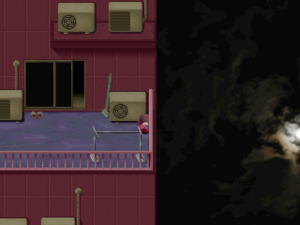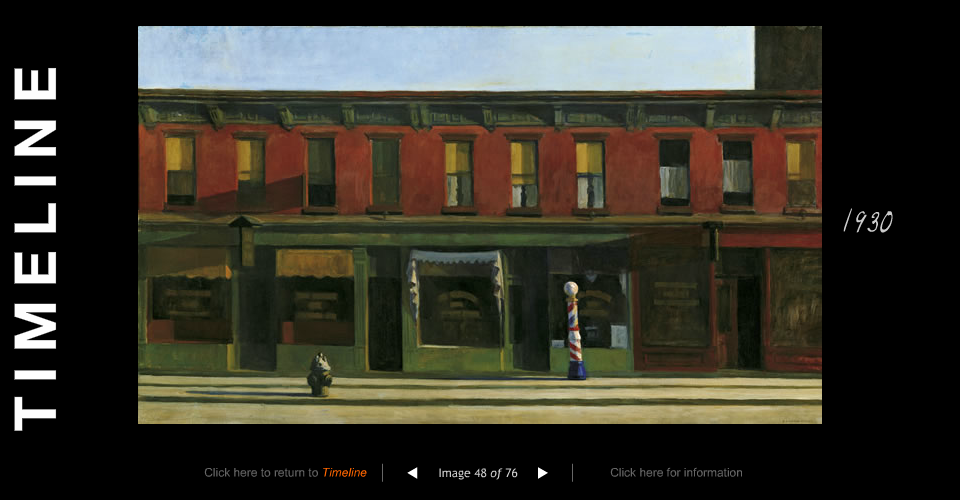>Mt.kiki (Mt.kiki moved page Madotsuki's Room(name) to The KALIMBA TV Channel(name)) |
>Mt.kiki No edit summary |
||
| Line 1: | Line 1: | ||
#REDIRECT [[The KALIMBA TV Channel(name)]] | #REDIRECT [[The KALIMBA TV Channel(name)]] | ||
[[File:Mado_Balcony_Nite.png|thumb|Red wall of a building(Early Sunday Morning is a "Easter"?)]] | |||
== [[Madotsuki's Room]]() == | |||
「'''日曜の早朝'''」 米国の画家エドワード・ホッパーの絵画(1930) ◆赤い建物の壁が特異な静けさを感じさせる作品;カンバス 油彩 82×102 cm ニューヨーク近代美術館. | |||
Museum of Modern Art, New York Oil on canvas 82 × 102 cm; work "early Sunday morning" feel the serenity peculiar red walls of the building (1930) ◆ U.S. painter Edward Hopper painting. | |||
[[File:Early_Sunday_Morning.png|link=http://www.nga.gov/exhibitions/2007/hopper/timeline/timeline.shtm|frame|left|Edward Hopper"early Sunday morning"(1930)]] | |||
Edward Hopper (1882–1967) produced some of the most enduringly popular images in American art. Throughout his career, he created quiet, yet riveting pictures of ordinary people and places, which in his hands became dramatic scenes that express a sense of isolation, anomie, and the bittersweet comfort of being alone. His images of New York diners, movie palaces, apartments, and offices reflect urban life in America between the world wars; his light-filled watercolors of the New England coast and its architecture evoke the austere beauty of the region. | |||
http://www.nga.gov/exhibitions/2007/hopper/timeline/timeline.shtm | |||
Revision as of 06:21, 27 February 2013
Redirect to:
Madotsuki's Room()
「日曜の早朝」 米国の画家エドワード・ホッパーの絵画(1930) ◆赤い建物の壁が特異な静けさを感じさせる作品;カンバス 油彩 82×102 cm ニューヨーク近代美術館.
Museum of Modern Art, New York Oil on canvas 82 × 102 cm; work "early Sunday morning" feel the serenity peculiar red walls of the building (1930) ◆ U.S. painter Edward Hopper painting.
Edward Hopper (1882–1967) produced some of the most enduringly popular images in American art. Throughout his career, he created quiet, yet riveting pictures of ordinary people and places, which in his hands became dramatic scenes that express a sense of isolation, anomie, and the bittersweet comfort of being alone. His images of New York diners, movie palaces, apartments, and offices reflect urban life in America between the world wars; his light-filled watercolors of the New England coast and its architecture evoke the austere beauty of the region.
http://www.nga.gov/exhibitions/2007/hopper/timeline/timeline.shtm


